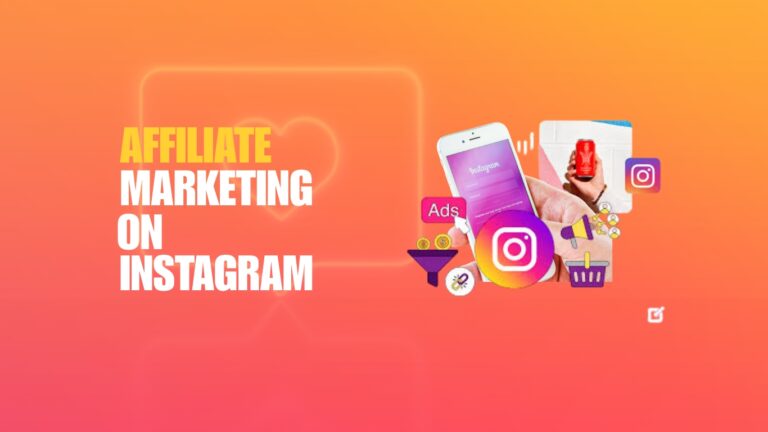Featured Social Media Software:
Affiliate marketing on Instagram has opened the doors for brands, influencers, and affiliate marketers to work creatively together by merging content creation with performance-based promotion. Brands gain targeted exposure through influencer partnerships, while influencers monetize their content by sharing affiliate products with engaged audiences. Affiliate marketers strategically promote products using reels, stories, and interactive posts, leveraging Instagram’s visual appeal and in-app shopping tools. This collaboration enhances product visibility, builds trust through authentic endorsements, and drives measurable sales, making Instagram a central hub for creative, data-driven affiliate marketing campaigns.
Instagram is a visual-based social media platform owned by Meta Platforms. It allows users to share photos, videos, and stories, and engage through likes, comments, and direct messaging. Instagram supports features like reels, IGTV, live videos, shopping tools, and affiliate tagging.
What is Instagram affiliate marketing?
Instagram affiliate marketing is a performance-based strategy where creators promote products and earn a commission for every sale made through their unique affiliate link. Influencers share these links via bios, Stories, Reels, or coupon codes, driving traffic to the brand while monetizing their content.
How does affiliate marketing for Instagram work?
Affiliate marketing on Instagram allows creators to earn money by promoting products or services through their content. Influencers receive unique affiliate links or discount codes from brands they partner with. These links can be placed in their bio, Stories (with swipe-up), or promoted through Reels, posts, and captions. When a follower clicks the link or uses the code to make a purchase, the influencer earns a commission. This strategy helps brands reach new audiences while giving influencers a way to monetize their content. Success depends on engagement, niche focus, and strategic content planning.
How to set up an Instagram affiliate marketing program
Once an affiliate understands the potential benefits they can gain from Instagram affiliate marketing, they can confidently take the first steps to set up their affiliate program. Here is a step-by-step guide for Instagram users looking to set up a new affiliate program.
- Define Your Niche and Goals
Identify a specific niche that aligns with your products or services. Set clear goals such as increasing sales, website traffic, or brand awareness. - Switch to a Business or Creator Account
Use an Instagram Business or Creator profile to access insights, branded content tools, and product tagging features necessary for affiliate marketing. - Choose an Affiliate Platform
Select an affiliate network like ShareASale, CJ Affiliate, Impact, Rakuten, or create a private program using Refersion, Tapfiliate, or GoAffPro to manage affiliates. - Generate Affiliate Links and Codes
Create unique trackable affiliate links and discount codes for each partner. Use UTM parameters to track link performance and conversions accurately. - Recruit the Right Affiliates
Invite influencers, content creators, or loyal customers with relevant audiences. Evaluate based on engagement rate, niche alignment, and content quality. - Provide Affiliate Resources
Offer pre-made creatives, product details, brand guidelines, and promotional assets. Ensure consistency in messaging and visual identity. - Integrate Instagram Tools
Enable Instagram Shopping, use story link stickers, and allow product tagging. These tools support seamless user journeys from content to checkout. - Track Performance Metrics
Use built-in analytics, affiliate dashboards, and third-party trackers to monitor clicks, sales, and commissions in real-time. - Optimize Based on Results
Refine strategies based on data. Adjust commission rates, update creatives, and retarget underperforming campaigns or audiences.
How to do affiliate marketing on Instagram?
Here are 12 strategies on how to do affiliate marketing on Instagram.
1. Add Website Link to Instagram Bio
This is one of the best ways for influencers (and micro-influencers) to get their traffic to convert to sales. If an Instagram feed is full of beautiful lifestyle images people are curious about, then letting them know they can shop for these items is key.
The Instagram bio is the only place on the platform where you can add a clickable link, making it a valuable asset for affiliate marketers. By adding a website link or an affiliate link to your bio, you provide followers with a direct pathway to make purchases or learn more about the products you feature.
2. Utilize Coupon Codes
Coupon codes have always been an effective way to incentivize purchases, and they are integral in the context of affiliate marketing. These codes offer followers a tangible benefit, such as a percentage off their purchase or free shipping, encouraging them to act quickly and make a purchase.
When used strategically, coupon codes can significantly increase conversion rates by adding a sense of urgency or exclusivity to the promotion.
3. Products Don’t Have to Be the Focus
Products don’t always have to be the central focus of every post or story. Influencers, such as travel bloggers, can use their lifestyle and experiences to naturally integrate affiliate marketing.
For example, a travel blogger like Everywhere might share stunning photo shoots in breathtaking locations around the world, showcasing their travel adventures.
These captivating images create a connection with the audience, drawing them in with the beauty of the places and the influencer’s style.
4. Use Instagram Stories to Create Brand Awareness
Since the introduction of Instagram Stories in October 2016, it has become an essential tool for influencers to connect with their audience and showcase their day-to-day lives.
Instagram Stories allow users to share more casual, authentic content that doesn’t have to adhere to the polished aesthetic of the main feed.
Instagram Stories allow users to share more casual, authentic content that doesn’t have to adhere to the polished aesthetic of the main feed. This has made it a popular feature for both influencers and brands to foster stronger connections with their followers.
5. Collaborate with Other Influencers
Partner with other influencers to co-promote products. Cross-promotion exposes your content to new audiences and can increase affiliate sales.
6. Create Blog Posts to Complement Instagram
To maximize the potential of affiliate marketing on Instagram, creating blog posts to complement your Instagram content can significantly drive traffic and increase conversion rates. By linking to a detailed blog post on your own website, you can provide additional value to your audience, offering them more in-depth information that they can’t get from a short Instagram post or story.
7. Run Sponsored Posts to Boost Sales
Sponsored posts on Instagram are a powerful tool for influencers looking to increase sales, engagement, and followers. These paid advertisements allow influencers to expand their reach beyond their organic audience and target specific groups that are more likely to be interested in their content or products.
8. Boost Posts Through Paid Searches
If an influencer wants to increase their followers or drive more clicks to a specific Instagram post, running paid searches via Google Ads can be an effective strategy. By using Google’s paid search ads, influencers can direct potential followers to their Instagram page or specific posts that feature affiliate products.
9. Instagram Reels
No Instagram post would be complete without discussing the growing importance of video content. Enter Reels, Instagram’s answer to TikTok. Reels allow creators to tell stories using short, engaging videos that can be as creative and dynamic as the influencer desires. Unlike Instagram Stories, which are only visible to followers and disappear after 24 hours, Reels are public, meaning they have a far wider reach and the potential to go viral.
10. Use Affiliate Links Strategically
It may not be immediately obvious how to use Instagram for affiliate marketing, as users cannot directly add clickable links to their photo captions. This is a common feature across many social media platforms, as they tend to prioritize content that keeps users engaged within the platform. However, Instagram provides several strategic ways to incorporate affiliate links into posts without disrupting the user experience, which is essential for driving conversions and generating sales.
11. Measure Results
Influencers serious about earning through affiliate marketing on Instagram rely on tools to schedule their posts at optimal times. By using analytics tools, they can track engagement, reach, and conversion rates. This data helps them identify which posts and strategies are working, allowing them to fine-tune their approach. Regularly measuring these results is essential for improving affiliate marketing campaigns, increasing conversion rates, and maximizing earnings. By understanding their audience’s behavior, influencers can post content when it is most likely to drive sales, ultimately enhancing their affiliate marketing efforts.
12. Create Memorable Branded Short URLs
To make affiliate links easier to remember, influencers can use branded short URLs. These custom URLs can be shared in images or captions, making it easier for followers to manually type them in. However, it’s important to note that manually typed URLs often result in fewer clicks, as the convenience of direct clickable links is preferred by most users.
Affiliate Marketing Content Ideas for Instagram
Here are some affiliate marketing ideas for Instagram in specific niches like travel, women’s fashion, skincare, and beauty:
Travel
- Destination Guides: Partner with travel brands to promote destination-specific products or services, like hotels, airlines, or tours.
- Packing Essentials: Share affiliate links for travel gear such as luggage, travel accessories, or tech gadgets.
- Travel Insurance: Partner with companies offering travel insurance and promote it to your followers who love to travel.
Women’s Fashion
- Seasonal Trends: Promote outfits for each season (summer dresses, winter coats) by sharing affiliate links for stores that match the latest trends.
- Styling Tips: Share affiliate links for clothing, accessories, or shoes while giving styling tips on how to wear them.
- Sustainable Fashion: Partner with eco-friendly or sustainable fashion brands and promote their collections with affiliate links.
Skincare
- Routine Recommendations: Share your skincare routine and promote products through affiliate links, from cleansers to serums and moisturizers.
- Seasonal Skin Care: Promote skincare products tailored to different seasons (e.g., hydrating creams for winter, SPF for summer).
- Specialty Products: Promote high-demand skincare products like anti-aging serums, acne treatments, or face masks.
Beauty
- Makeup Tutorials: Create makeup tutorials and include affiliate links for the makeup products you use.
- Beauty Kits: Partner with beauty brands to offer special beauty kits or bundles (e.g., skincare + makeup combo).
- Haircare Products: Share affiliate links for hair care products like shampoos, conditioners, and hair styling tools.
Conclusion
In conclusion, Instagram is a powerful platform for affiliate marketing when used strategically. By focusing on high-quality visuals, engaging consistently with followers, leveraging Stories and Reels, and utilizing analytics, you can enhance your marketing efforts. Whether you’re using affiliate links in your bio or collaborating with influencers, Instagram offers multiple opportunities to expand your reach and increase conversions. Remember to stay authentic, monitor your performance, and continuously adapt your approach based on what resonates with your audience. With the right strategies, Instagram can become a valuable tool in driving affiliate marketing success.
Frequently Asked Questions (FAQ)
What is affiliate marketing on Instagram?
Affiliate marketing on Instagram allows influencers to promote products and earn commissions for sales generated through their unique links.
How do influencers track their affiliate sales on Instagram?
Influencers can use affiliate marketing platforms or custom tracking links to monitor clicks, conversions, and commissions.
Can affiliate links be shared in Instagram posts?
While links can’t be directly placed in regular Instagram posts, they can be added to bios or Instagram Stories for accounts with 10k+ followers.
How do influencers select products for affiliate marketing on Instagram?
Influencers should choose products that align with their niche and resonate with their audience to build trust and authenticity.
Is it necessary to disclose affiliate links on Instagram?
Yes, influencers must disclose affiliate relationships by using tags like #ad or #sponsored to comply with legal guidelines.


